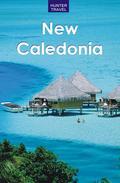New Caledonia consists of a large island, Grande Terre, and a group of small islands called dependencies - the Loyalty Group, Ouen, the Isle of Pines, Huon Islands, and the Chesterfields. Grande Terre is as big in land mass as the whole state of Hawaii. Its capital Nouméa, with 70,000 people, looks big too. There are imposing buildings, freeways, traffic lights, escalators and, in the center of town there is a large bowered park called the Place des Cocotiers. Nouméa has sidewalk cafes, little corner bistros, boulangeries, patisseries and, if it weren't for the black faces and the climate, you could be in a French provincial town. The white inhabitants have a Gallic look, the slight difference around nose and mouth that perhaps comes from a nasal approach to words. Some look as if they had just left the farm, some are conservatively well dressed, and many of the young people are clad in the latest mod-chic. Arrival in New Caledonia is attended by the feeling that you've arrived somewhere very colonial, very French. You'll soon become aware that the standard of living is much higher in New Caledonia than on other Pacific islands, except Guam and Hawaii. They've got television, lots of cars, good housing, big hospitals, and a form of government that's run as an overseas territory of France. For the present, New Caledonia is a great place for a vacation. For Aussies and New Zealanders it's a sort of Hawaii, but closer. Nouméa is less than 1,000 miles from Australia. In Nouméa you'll find the big hotels, the boutiques, the casinos, the beaches, and the restaurants. Half of the population lives there. That leaves a lot of empty space on the rest of the big island and the tiny islands around it. This is the most detailed guide to these islands, by an author who has spent a great deal of time here over the years.


